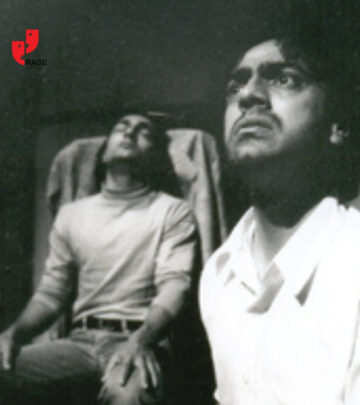Rohit Sharma’s Retirement Twist: England Series Plan Revealed
Rohit planned a mid-series retirement in England, but selectors insisted on team unity!!?

Image: Instagram
Rohit Sharma’s decision regarding the timing of his retirement has sparked a thoughtful debate among cricket enthusiasts. The renowned batsman had reportedly envisioned an exit plan that would see him leaving the international stage during England’s tour, a move modeled on MS Dhoni’s memorable mid-series retirement in 2014. The idea was not simply about ending a storied career; it was to herald a smooth transition of leadership by passing the Test captaincy to a promising youngster, akin to the baton passed to Virat Kohli in earlier days.
Cricket Retirement Redux
According to a recent post by Filmymantra Media, Sharma did not want to bow out before the England series began. Instead, his plan was to travel to England and announce his retirement mid-series, thereby creating a farewell that would capture the imagination of cricket fans. This concept mirrors MS Dhoni’s retirement narrative against Australia in 2014 where the legendary captain chose a high-profile moment to step down. Rohit’s proposed timing was seen by many as an effort to leave the game on his own terms, ensuring that his exit would serve as a defining moment in cricket history.
However, the selectors had a different perspective. In a bid to maintain a steady and consistent team performance during the tour, they opted against Sharma’s plan. The management’s insistence on continuity, particularly during challenging overseas tours, highlights the importance placed on team dynamics and stability. The selectors feared that a mid-series retirement might disrupt the balance of the squad and affect morale, especially when England’s competitive conditions are at play.
Selectors’ Dilemma
The clash between a player’s personal retirement plan and the strategic interests of the team is not new in sports. In Sharma’s case, his desire to emulate a retirement method reminiscent of Dhoni’s departure created a scenario where legacy meets leadership concerns. Sharma’s plan would have not only marked the end of an illustrious playing career but also provided an opportunity to usher in fresh talent. By envisaging his exit as a mid-series event, he perhaps hoped to inspire a smooth leadership transition without causing undue disruption.
In contrast, cricket selectors argued that the focus during a tour – particularly one in a cricketing giant like England – should remain firmly on performance. Consistency in the team’s lineup is a critical factor, and any significant change, such as losing a senior player mid-series, might lead to strategic uncertainties. The decision to stick with the current squad was, therefore, rooted in a desire to retain the collective competitive edge and ensure that team morale remained uncompromised.
Legacy And Leadership
The debate touches upon a broader narrative within cricket regarding legacy and leadership. Rohit Sharma, who has been a pivotal figure for his team, is not just known for his prolific run-scoring but also for his measured approach on and off the field. His retirement strategy, as outlined by the post, seems designed to create a moment that would be etched in cricket lore – a dramatic exit that resonates with fans and future generations alike.
The mention of a young Virat Kohli as the beneficiary of this planned transition further underscores the desire for a generational change. While many fans have witnessed such evolving dynamics in past eras, this particular episode reignites discussions about how best to manage the transition of power in a team composed of both seasoned campaigners and emerging talents.
Moreover, the decision from the selectors resonates with a common theme seen across sports: the balance between individual aspirations and collective stability. Even as fans yearn for those emotional and theatrical moments that define a sport’s history, the pragmatic choices made by team management are often driven by the need to secure favorable outcomes on the field.
Fan Reactions And Future Prospects
Social media channels have been abuzz with discussions following the post from Filmymantra Media. Many supporters expressed admiration for Sharma’s forward-thinking retirement plan, citing its parallels with the revered exit of MS Dhoni. Others, however, echoed the selectors’ concerns, emphasizing that maintaining team consistency during sensitive tours is paramount. This juxtaposition of views reveals the inherent tension between personal legacy and organizational strategy.
As the England series unfolds, Sharma’s situation will undoubtedly remain a subject of interest. Whether or not he eventually follows through with any form of planned retirement, the episode serves as a reminder of the complex interplay between individual narratives and the collective ambitions of a national team. His story is not just about personal milestones but also about the evolving nature of leadership in the ever-competitive arena of international cricket.
This episode leaves fans eagerly anticipating the next chapter in Sharma’s career, as well as the broader implications for team strategy. Even in retirement plans, the careful choreography of career transitions plays a critical role in shaping the future course of the sport. And while the selectors’ decision has thwarted the original retirement proposal, it has also reaffirmed the enduring importance of unity and consistency in achieving sporting excellence.
Ultimately, Rohit Sharma’s retirement twist – its planning and the resulting debate – is emblematic of the many crossroads athletes face in deciding when and how to leave the game. It is a story that will surely prompt deeper reflections on legacy, leadership, and the nuanced art of enabling a team to thrive amid change.
Read full bio of Cynthia Jean Daniel



















